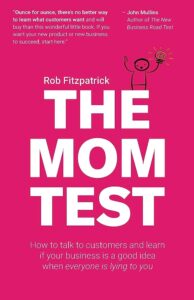Unleashing the Power of Key Performance Indicators (KPIs) for Business Success
KPIs are the secret sauce that drives strategic decision-making, performance evaluation, and goal attainment. Join us as we explore the importance of KPIs, how to choose the right ones for your organization, and how to leverage them to unlock your full potential. Get ready to crack the code and unleash the power of KPIs like never before.
What Is a Key Performance Indicator (KPI)?
Key performance indicators (KPIs) are a collection of measurable metrics utilised to assess the overall long-term performance of a company. These indicators play a crucial role in evaluating a company’s strategic, financial, and operational accomplishments, particularly in relation to other businesses operating in the same industry.
Categories of KPIs

There are four distinct categories that encompass most KPIs, each with its own unique characteristics, timeframe, and target users.
Strategic KPIs are typically the most broad and high-level, providing a snapshot of a company’s performance without delving into intricate details. Executives primarily utilise strategic KPIs to assess factors such as return on investment, profit margin, and total company revenue.
Operational KPIs focus on shorter timeframes, often tracking monthly or even daily performance in various processes, segments, or geographic locations. These KPIs are commonly employed by management staff to analyse specific questions derived from strategic KPI analysis. For instance, if executives observe a decline in company-wide revenue, they may investigate which product lines are underperforming.
Functional KPIs zoom in on particular departments or functions within a company. For example, the finance department may track the number of new vendors registered in their accounting information system each month, while the marketing department measures the number of clicks received in email distributions. These KPIs can be either strategic or operational but deliver the most value to a specific set of users.
Leading/lagging KPIs describe the nature of the analysed data and whether it predicts future outcomes or reflects past events. Let’s consider two different KPIs: the number of overtime hours worked and the profit margin for a flagship product. The number of overtime hours worked can serve as a leading KPI if the company starts noticing a decline in manufacturing quality. On the other hand, profit margins are a lagging indicator that results from operations and reflects past performance.
Types of KPIs
Financial Metrics and KPIs

Financial-related key performance indicators (KPIs) primarily centre around revenue and profit margins. Among these, net profit stands as the most reliable metric for assessing profitability. It represents the remaining revenue, designated as profit, after deducting all expenses, taxes, and interest payments over a specific period.
While financial metrics can be derived from a company’s financial statements, internal management often finds it more valuable to analyse specific numbers tailored to the aspects or issues they wish to address. For instance, a company may utilise variable costing to recalibrate certain account balances solely for internal analysis purposes.
Examples of financial KPIs encompass various categories:
- Liquidity ratios (e.g., current ratio): These KPIs gauge a company’s ability to manage short-term debt obligations based on the availability of short-term assets.
- Profitability ratios (e.g., net profit margin): These KPIs assess how effectively a company generates sales while maintaining low expenses.
- Solvency ratios (e.g., total debt-to-total assets ratio): These KPIs evaluate the long-term financial health of a company by examining its ability to repay long-term debts.
- Turnover ratios (e.g., inventory turnover): These KPIs measure the speed at which a company performs a specific task. For instance, inventory turnover measures how swiftly an item moves from inventory to sale. Companies strive to increase turnover to facilitate quicker conversion of spending into revenue recovery.
Customer Experience Metrics and KPI
Customer-oriented KPIs revolve around the efficiency of serving individual customers, customer satisfaction, and customer retention. These metrics are employed by customer service teams to gain insights into the quality of service provided to customers. Examples of customer-centric metrics include:
- Number of new ticket requests: This KPI tracks the count of customer service requests, offering visibility into the volume of new and ongoing issues faced by customers.
- Number of resolved tickets: This KPI measures the number of requests successfully addressed. By comparing the number of requests to the number of resolutions, a company can evaluate its success rate in effectively handling customer inquiries.
- Average resolution time: This KPI indicates the average time required to assist a customer in resolving an issue. Companies may segment the average resolution time based on different types of requests, such as technical issues versus new account requests.
- Average response time: This KPI represents the average duration it takes for a customer service agent to initiate contact with a customer after the customer submits a request. While the initial agent may not possess the necessary knowledge or expertise to provide an immediate solution, reducing customer wait times is often prioritised.
- Top customer service agent: This KPI combines multiple metrics mentioned above and evaluates the performance of individual customer service representatives. For example, in addition to analysing the company-wide average response time, a company can identify the three fastest and slowest responders.
- Type of request: This KPI tracks the frequency of different types of customer requests. It helps companies gain a better understanding of the specific issues customers face (e.g., incorrect or inaccurate directions on the company’s website) that require resolution.
- Customer satisfaction rating: This KPI represents a subjective measurement of customer satisfaction. Companies may conduct surveys or use post-interaction questionnaires to gather additional information about the customer’s experience.
It’s important to note that KPIs are typically internal measurements used by management to assess a company’s performance and are not externally mandated requirements.
Process Performance Metrics and KPI

Process metrics are designed to assess and monitor operational performance throughout an organisation. These KPIs evaluate how tasks are executed and identify any process, quality, or performance issues. They are particularly valuable for companies with repetitive processes, such as manufacturing firms or those in cyclical industries. Examples of process performance metrics include:
- Production efficiency: This KPI calculates the production time for each stage divided by the total processing time. For example, a company may aim to spend only 2% of its time on raw material procurement. If it discovers that it takes 5% of the total process time, the company can focus on improving the solicitation process to reduce inefficiencies.
- Total cycle time: This KPI measures the overall time required to complete a process from start to finish. If management wishes to analyse the process over a specific period, the total cycle time can be converted into an average cycle time.
- Throughput: This KPI evaluates the number of units produced divided by the production time per unit, indicating the speed at which the manufacturing process operates.
- Error rate: This KPI determines the total number of errors encountered divided by the total number of units produced. By understanding the quantity of items that fail quality control testing, companies can strive to reduce waste and improve quality.
- Quality rate: This KPI focuses on the percentage of successful units produced out of the total number of units produced, providing insight into the company’s success rate in meeting quality standards. It emphasises the positive outcomes rather than the negative.
Process metrics enable management to gain a comprehensive understanding of operational performance and identify areas for improvement. By monitoring these KPIs, companies can enhance efficiency, reduce errors, optimise production cycles, and maintain high-quality standards.
Marketing KPIs
Marketing KPIs are employed to assess the effectiveness of marketing and promotional campaigns. These metrics focus on measuring conversion rates, indicating how frequently prospective customers take specific actions in response to marketing efforts. Examples of marketing KPIs include:
- Website traffic: This KPI tracks the number of visitors to specific pages on a company’s website. It helps management understand if online traffic is effectively directed towards potential sales channels and whether customers are being funnelled appropriately. You can learn more about improving your site’s conversion rate here.
- Social media traffic: This KPI monitors views, follows, likes, retweets, shares, engagement, and other measurable interactions between customers and the company’s social media profiles.
- Conversion rate on call-to-action content: This KPI centres around targeted promotional initiatives that prompt customers to perform specific actions. For instance, a campaign may encourage customers to act before a sale ends. By dividing the number of successful engagements by the total number of content distributions, a company can determine the percentage of customers who responded to the call to action.
- Blog articles published per month: This KPI simply counts the number of blog posts published by a company within a given month. It helps track content generation and engagement efforts.
- Click-through rates: This KPI measures the number of specific clicks performed on email distributions. For example, it can track how many customers opened an email, clicked on a link, and followed through with a purchase. Click-through rates provide insights into the effectiveness of email marketing campaigns.
By analysing these marketing KPIs, companies can gain valuable insights into the performance of their marketing initiatives, optimise strategies, and enhance customer engagement and conversion rates.
IT KPIs

A company striving for operational excellence may seek to monitor the performance of its internal IT department. These IT KPIs provide insights into employee satisfaction and whether the IT department is adequately staffed. Examples of IT KPIs include:
- Total system downtime: This KPI measures the duration during which various systems are taken offline for updates or repairs. System downtime can impact customer orders and hinder employees from carrying out their duties, such as when the accounting information system is inaccessible.
- Number of tickets/resolutions: Similar to customer service KPIs, this metric focuses on internal staff requests related to hardware or software needs, network issues, or other internal technology problems. Tracking the number of tickets and successful resolutions helps gauge the efficiency of IT support.
- Number of developed features: This KPI quantifies the internal product development by counting the number of implemented product changes. It reflects the progress and innovation within the IT department.
- Count of critical bugs: This KPI tracks the number of significant issues identified within systems or programmes. The company establishes its internal standards to differentiate between minor and major bugs, ensuring that critical problems are promptly addressed.
- Backup frequency: This KPI measures how often critical data is duplicated and stored in a secure location. Adhering to record retention requirements, management sets different targets for different types of information to ensure data protection and disaster recovery readiness.
By monitoring these IT KPIs, companies can assess the performance and effectiveness of their internal technology operations, identify areas for improvement, and ensure smooth IT functioning to support overall business operations.
Sales KPIs
The primary objective of a company is to generate revenue through sales. While financial KPIs typically measure revenue, sales KPIs provide a more detailed analysis by utilising nonfinancial data to gain insights into the sales process. Examples of sales KPIs include:
- Customer Lifetime Value (CLV): This KPI represents the total anticipated amount of money a customer is expected to spend on a company’s products throughout their entire business relationship. It helps evaluate the long-term value of customers.
- Customer Acquisition Cost (CAC): This KPI measures the total cost incurred in sales and marketing efforts to acquire a new customer. By comparing CAC to CLV, businesses can assess the effectiveness of their customer acquisition strategies.
- Average dollar value for new contracts: This KPI calculates the average size of new agreements. Companies may have specific targets for landing customers with larger or smaller contract values, depending on their business objectives.
- Average conversion time: This KPI tracks the duration from the initial contact with a prospective client to securing a signed contract. It provides insights into the efficiency of the sales process and helps identify areas where improvements can be made.
- Number of engaged leads: This KPI quantifies the quantity of potential leads that have been contacted or met with. It can be further segmented by different mediums such as in-person visits, emails, phone calls, or other customer interactions. This metric helps assess the effectiveness of lead engagement strategies.
Management may incentivize performance tied to KPIs, such as providing bonuses or commission rates for salespeople based on meeting expected conversion rates or engaging with an appropriate number of leads.
By monitoring these sales KPIs, companies can gain a comprehensive understanding of their sales performance, identify areas for improvement, and align their sales strategies with business objectives to drive revenue growth.
You can learn how to improve these KPIs by following our guide to creating an effective sales process and our tips for improving your sales pipeline.
Human Resource and Staffing KPIs

Analyzing specific KPIs related to employees can provide valuable insights for companies. From turnover to retention to satisfaction, there is a wealth of information available regarding the staff. Examples of human resource or staffing KPIs include:
- Absenteeism rate: This KPI measures the frequency at which employees call in sick or miss shifts within a specific period. It can serve as a leading indicator of employee disengagement or dissatisfaction.
- Number of overtime hours worked: Tracking the amount of overtime hours worked helps gauge employee workload and identify potential issues such as burnout or inadequate staffing levels.
- Employee satisfaction: This KPI typically involves conducting company-wide surveys to assess how employees feel about various aspects of the company. To derive the most value from this KPI, companies should consider administering the same survey annually to track changes and trends in employee satisfaction over time.
- Employee turnover rate: This KPI measures the frequency and speed at which employees leave their positions. Companies can further analyse this metric by breaking it down across departments or teams to understand why certain positions experience higher turnover rates than others.
- Number of applicants: This KPI tracks the count of applications received for open job positions. It helps evaluate whether job listings are reaching a broad audience and attracting strong candidates.
By monitoring these human resource or staffing KPIs, companies can gain insights into employee engagement, satisfaction, and retention. This information can guide strategies to improve work environments, enhance employee experiences, and attract and retain top talent.
The Difference Between Key Performance Indicators and Metrics
While the terms KPI and business metric are often used interchangeably, they have distinct meanings. A business metric is a quantifiable measure used to monitor and evaluate the status of a specific business process. For instance, website traffic is a common example of a business metric.
On the other hand, KPIs (Key Performance Indicators) are a specific type of performance measurement that helps assess the performance of an organisation, department, or individual against strategic goals. In essence, every KPI is a business metric, but not every business metric is a KPI.
The difference between a KPI and a metric lies in their nuances. It is important to note that, despite these subtle differences, they often complement each other. Here’s a side-by-side comparison of a KPI and a metric:
| Attribute | KPI | Metric |
| Timeframe | Specific Deadline | Ongoing |
| Purpose | Track towards targets and objectives | Monitor ongoing business performance |
| Example | Increase MRR by $2M in Q3 | MRR |
To develop an effective strategy for creating KPIs, start by understanding your organisational objectives, how you plan to achieve them, and who can take action based on the information. Through iteration and development, you will gain a better understanding of which business processes can be included in a KPI dashboard and who should have access to that dashboard.
What Makes A Good Key Performance Indicator (KPI)?

A well-defined KPI should possess the following characteristics:
- Provide objective evidence: It should offer measurable and objective evidence of progress towards achieving a desired outcome or result.
- Inform decision-making: A good KPI should measure what is intended to be measured, providing meaningful data that can inform better decision-making within an organisation.
- Enable performance comparison: It should enable comparisons to gauge the degree of performance change over time. This allows for tracking and evaluating progress towards goals and targets.
- Track multiple aspects: KPIs can track various aspects such as efficiency, effectiveness, quality, timeliness, governance, compliance, behaviours, economics, project performance, personnel performance, or resource utilisation, depending on the specific area being assessed.
- Balance leading and lagging indicators: A strong KPI framework includes a balance between leading indicators (predictive measures that help anticipate future performance) and lagging indicators (measures that reflect past performance). This provides a comprehensive view of performance across different timeframes.
By ensuring these characteristics, organisations can establish meaningful and effective KPIs that provide valuable insights into their progress and support informed decision making.
Advantages of KPIs
There are several reasons why a company may choose to analyse Key Performance Indicators (KPIs). KPIs serve as a valuable tool in the following ways:
- Informing management: KPIs provide quantifiable and data-driven insights that help management identify specific issues and areas that require attention. This data-driven approach supports strategic planning and facilitates operational excellence within the organisation.
- Holding employees accountable: KPIs offer an objective and statistically supported way to hold employees accountable for their performance. By relying on measurable metrics rather than subjective judgments, KPIs promote fairness and eliminate discrimination among employees. This transparency and monitoring can motivate employees as they realise their performance is closely tracked and evaluated.
- Bridging business operations and goals: KPIs act as a bridge that connects actual business operations with the desired goals of the company. While setting targets is essential, without the ability to track progress towards those goals, the plans lack purpose. KPIs enable companies to set objectives and effectively monitor their progress, ensuring alignment between operations and overarching goals.
By leveraging KPIs, companies can gain valuable insights, drive performance improvements, foster employee accountability, and ensure that their actions are aligned with strategic objectives.
Limitations of KPIs
Working with KPIs comes with some potential drawbacks that should be considered:
- Long time frames for meaningful data: Meaningful data may require a long time frame to collect, especially when analysing trends over extended periods. For instance, gathering annual data from employees over several years may be necessary to understand satisfaction rate trends effectively.
- Constant monitoring and follow-up: KPIs require ongoing monitoring and analysis to be useful. Simply preparing KPI reports without thorough analysis serves no purpose. Additionally, if KPIs are not continuously monitored for accuracy and reasonableness, they fail to encourage beneficial decision-making.
- Potential for gaming: There is a risk that managers may prioritise improving KPIs to earn performance bonuses instead of focusing on actually improving processes or results. Overemphasis on productivity KPIs may lead to a decline in quality, and employees may feel excessive pressure to meet potentially unreasonable KPI measurements.
Ultimately, KPIs are key performance indicators that provide data for decision-making. They need to be carefully monitored, evaluated, and aligned with broader strategies to reap their benefits while mitigating potential drawbacks.
What Makes a Good Key Performance Indicator (KPI)?

To ensure meaningful insights and effective data-driven decision-making, it is crucial to establish and define appropriate KPIs. What makes a KPI good? Here are some key considerations:
- Business alignment: KPIs should align with your overall business strategy and goals. For instance, if the goal is to increase monthly recurring revenue (MRR) by 20% by the end of the fiscal year (a high-level KPI), a sales team KPI might be to increase inbound leads by 50% by the end of Q3 (a low-level KPI). This KPI contributes to the overall goal as new leads have revenue potential.
- Actionability: KPIs should be actionable. Once you set a KPI, it is essential to outline the steps and metrics to measure progress. Without a clear plan and actionable steps, a KPI loses its effectiveness. For example, if the goal is to increase inbound leads, a plan might involve moving more prospects from the Marketing Qualified Lead (MQL) to Sales Qualified Lead (SQL) stage. Actionable steps pave the way for achieving KPIs and driving results.
- Realism: KPIs should be realistic. It is advisable to start with achievable targets rather than setting unrealistic, lofty goals. Ambitious goals may look impressive, but they can hinder progress if they are unattainable from the beginning.
- Measurability: KPIs should be measurable. When setting KPIs, consider the desired end result, timeline, and how you will measure progress. Using business intelligence or analytics tools can help track KPIs effectively. For example, tracking leads can be visualised through data visualisation, allowing you to monitor progress and share insights with your team or across the organisation.
By incorporating these considerations, organisations can establish strong KPIs that align with their strategic objectives, drive actionable steps, remain realistic, and provide measurable insights for informed decision-making.
Creating Your Own Key Performance Indicator
What Makes a Good KPI?
Now that we understand the definition of a KPI, let’s delve into the basics of setting effective KPIs. While it can be helpful to draw inspiration from industry-recognised KPIs, the KPIs you set should be tailored specifically to your business and its unique goals. Let’s explore an example of a bad KPI versus a good one.
Here’s an example of a bad KPI: “Make a lot of money this year.” This KPI is highly vague and lacks specificity. What constitutes “a lot of money”? Without a specific target amount, it becomes challenging to identify the necessary actions to achieve the goal. Additionally, without a clear goalpost or a defined amount to aim for, it becomes difficult to track progress and measure success against this KPI.
On the other hand, here’s an example of a good KPI: “Increase monthly recurring revenue by $50K this month.” This KPI is specific, outlining both the dollar amount and the timeframe for achieving it. With such a detailed KPI, you have a measurable metric (monthly recurring revenue) that allows you to track your progress accurately. It enables you to focus on specific actions, such as pursuing expansion MRR from existing customers, to achieve the KPI.
It is essential to remember that KPIs serve as a form of communication. When creating a KPI, it’s crucial to adhere to the basic principles of effective communication: ensure it is concise, clear, and relevant to the specific goals and objectives of your business.
By setting specific, measurable, and relevant KPIs, you can enhance clarity, track progress effectively, and align your actions towards achieving desired outcomes.
How Can I Create a Great KPI?

It is important to distinguish between KPIs and business metrics as they serve different purposes. Key performance indicators (KPIs) should be directly related to a specific business outcome and provide a measure of performance. To better understand how to set a KPI, let’s consider an example.
Imagine your business objective is to increase monthly recurring revenue, and your team decides to set a KPI for sales growth. Here’s an example of how you might define the KPI:
KPI: Increase monthly recurring revenue by 10% over the next quarter.
In this example, the desired outcome is to achieve a 10% growth in monthly recurring revenue within the next quarter. This KPI directly aligns with the business objective of increasing revenue. It provides a specific target that can be measured and tracked to assess performance.
When setting a KPI, it is important to clearly define the desired outcome and ensure that it is aligned with the overall business goals. This clarity enables effective monitoring, evaluation, and decision-making to drive progress and achieve the desired results.
What’s The Best Way To Measure Key Performance Indicators (SMART Framework)?

You may be wondering, “How do I measure my company’s KPIs?” Well, the most effective approach is to utilise the SMART framework.
What is the SMART framework?
SMART stands for Specific, Measurable, Attainable, Relevant, and Time-bound. It outlines the five essential criteria that your KPIs should meet to be effective.
Specific
Is your objective specific? Your KPI should have a clear and well-defined focus area. It should directly target a specific aspect of your operations, such as sales, customer satisfaction, or website traffic.
Measurable
Can you measure progress toward your goal? Your KPI should be quantifiable using objective data, such as percentages or numerical values. It should provide a measurable indicator of progress.
Attainable
Is the goal realistically attainable? Your KPI should be challenging yet attainable within a given timeframe. Avoid setting unrealistic or unachievable targets.
Relevant
How relevant is the goal to your organisation? Your KPI should directly align with your business objectives and reflect an area that is critical to your overall success. It should be meaningful and impactful for your organisation.
Time-bound
What is the timeframe for achieving this goal? Determine the specific timeframe for your KPI, whether it’s monthly, quarterly, or annually. Setting a timeframe allows for comparisons between periods, enabling you to track performance and growth effectively.
SMARTER Targets
If you want to enhance the SMART framework, consider making it SMARTER by adding “Evaluate” and “Re-evaluate” to the measurement steps. KPIs should not be set once and forgotten. Continuously evaluate and re-evaluate them to ensure they remain attainable and on track.
By applying the SMART framework to your KPIs, you can establish effective goals that are specific, measurable, attainable, relevant, and time-bound. Regular evaluation will help keep your KPIs relevant and aligned with your organisation’s evolving needs.
What Is a KPI Report?

Now that you are familiar with the concept of key performance indicators (KPIs), you may have come across the term “KPI report.” A KPI report is a consolidated summary of all the key KPIs relevant to a specific project, campaign, or overall operations.
These reports are typically generated using interactive dashboards or reporting software that allows users to customise and share the information. The primary purpose of KPI reports is to track performance strategically, providing a comprehensive overview of crucial business activities and their performance in various aspects.
What Are The Best KPIs To Measure?
Throughout this article, we have emphasised the importance of aligning your key performance indicators (KPIs) with your organisational goals and mission. This alignment ensures that everyone in the organisation is working towards the same objectives.
For instance, if your strategic goal is to enhance customer service, a relevant KPI could be to “Reduce customer complaint resolution time by 30% over the next 6 months.” Failing to meet this requirement would prompt the need to investigate the reasons and take corrective action promptly.
We recognise that selecting the most effective KPIs to begin with can be a challenge. To initiate your journey into performance tracking, we have compiled a list of fundamental KPIs to monitor across various business functions, including sales, finance, and marketing. Use these metrics to create your KPI dashboard:
- Sales: Monthly revenue, conversion rate, average deal size, customer acquisition cost (CAC), and sales growth rate.
- Finance: Gross profit margin, net profit margin, return on investment (ROI), accounts receivable turnover, and cash flow.
- Marketing: Website traffic, lead generation, conversion rate, customer lifetime value (CLV), and return on advertising spend (ROAS).
By utilising these basic KPIs as a starting point, you can establish a comprehensive KPI dashboard tailored to your specific business needs. This will enable you to monitor and track performance effectively across different areas of your organisation.
Best Executive KPIs
Net Profit Margin
The Net Profit Margin is a financial metric that indicates the net profit as a percentage of total revenue. To calculate the Net Profit Margin, you divide the net profit (after deducting all expenses) by the total revenue. This calculation provides insight into the profitability of your business by measuring the portion of revenue that translates into net profit after accounting for all expenses incurred. The higher the Net Profit Margin, the more efficient and profitable your business operations are considered to be.
Debt to Equity Ratio
The Debt to Equity Ratio is a financial metric that assesses how an organisation funds its growth and utilises shareholder investments. To calculate the Debt to Equity Ratio, you divide the company’s total debt by its shareholders’ equity.
For instance, if a company has a debt of $1 million and shareholders’ equity of $500,000, the Debt to Equity Ratio would be 2. This indicates that the company has twice as much debt as equity.
This ratio provides valuable insights into the company’s financial leverage and risk. A higher Debt to Equity Ratio suggests that a larger portion of the company’s growth is financed through debt, which can indicate higher financial risk. On the other hand, a lower ratio indicates a more conservative approach with a larger proportion of growth funded by shareholder investments.
Lifetime Value to Cost of Acquisition Ratio
The Customer Lifetime Value to Cost of Acquisition Ratio (LTV:CAC Ratio) is a key performance indicator that compares the theoretical lifetime revenue generated from a customer to the costs associated with acquiring that customer. To calculate this ratio, you divide the Customer Lifetime Value (LTV) by the Cost of Acquisition (CAC).
The LTV:CAC Ratio provides insights into the profitability and efficiency of your customer acquisition efforts. A higher ratio indicates that the lifetime revenue from a customer exceeds the costs incurred to acquire them, suggesting a positive return on investment. Conversely, a lower ratio may indicate that the costs of acquiring a customer outweigh their potential lifetime value.
By monitoring the LTV:CAC Ratio, you can make informed decisions about optimising your marketing and sales strategies. A higher ratio signifies more effective customer acquisition, while a lower ratio may indicate the need for adjustments in your acquisition or retention strategies.
CAC Payback Period
The Customer Acquisition Cost (CAC) Payback Period is the duration it takes for a company to recoup the costs invested in acquiring a customer. It is a metric that measures the time required to earn back the expenses incurred in acquiring a new customer. A shorter payback period indicates a faster return on investment.
By calculating the CAC Payback Period, businesses can evaluate the efficiency and effectiveness of their customer acquisition strategies. A shorter payback period implies that the revenue generated from acquired customers surpasses the initial costs in a shorter timeframe, demonstrating a more favourable return on investment. Conversely, a longer payback period suggests that it takes a longer time to recover the acquisition costs.
Monitoring the CAC Payback Period allows companies to assess the financial viability of their customer acquisition efforts. It helps in determining the profitability and sustainability of customer acquisition activities, enabling businesses to make informed decisions and optimise their strategies for achieving a quicker return on investment.
Best Marketing KPIs

Customer Acquisition Cost
Customer Acquisition Cost (CAC) refers to the expenses incurred by a business in acquiring new customers. It is calculated by dividing the total costs associated with customer acquisition, such as marketing and advertising expenses, by the number of new customers acquired within a specific timeframe.
The CAC metric provides valuable insights into the financial investment required to acquire each new customer. By quantifying the costs associated with attracting and converting customers, businesses can assess the efficiency and effectiveness of their customer acquisition strategies. A higher CAC indicates that more resources are needed to acquire each customer, while a lower CAC suggests a more cost-effective approach.
By monitoring the CAC, businesses can make data-driven decisions to optimise their marketing and sales efforts. By reducing CAC or improving the return on investment for customer acquisition, companies can enhance their profitability and allocate resources more effectively. It also helps in evaluating the effectiveness of different marketing channels and campaigns, allowing businesses to make informed decisions about resource allocation and customer acquisition strategies.
Lead Conversion Rate
The Lead Conversion Rate is a metric that measures the percentage of website visitors who are successfully captured as leads. This rate provides valuable insights into the effectiveness of your sales and marketing efforts in converting potential leads into paying customers.
By tracking the Lead Conversion Rate, you can assess how well your website and marketing campaigns are performing in terms of generating qualified leads. A higher conversion rate indicates that a larger proportion of visitors are taking the desired action and providing their contact information, signalling a higher likelihood of converting them into paying customers. On the other hand, a lower conversion rate may indicate the need to optimise your website design, messaging, or lead capture processes to improve conversion rates.
Monitoring and analysing the Lead Conversion Rate allows you to identify areas for improvement in your sales and marketing strategies. By implementing targeted optimisations based on the insights gained from this metric, you can enhance your lead generation and conversion efforts, ultimately driving higher customer acquisition and revenue growth.
Marketing Qualified Leads
Marketing teams utilise Marketing Qualified Leads (MQLs) as a standardised gauge to assess the calibre of leads they generate and subsequently transfer to sales. These MQLs serve as a universal metric within marketing departments, allowing teams to evaluate the effectiveness of their lead-generation efforts. Each marketing team often establishes distinct objectives and benchmarks regarding the number and quality of MQLs they aim to achieve.
Return on Marketing Investment
The Return On Marketing Investment (ROMI) metric evaluates the revenue generated by a marketing campaign in relation to its associated costs. To calculate ROMI, the expenses incurred in marketing are subtracted from the revenue generated by marketing activities. The resulting figure is divided by the marketing investment and multiplied by 100 to obtain a percentage representation. This metric provides insights into the effectiveness and profitability of a marketing campaign by quantifying the return relative to the resources invested.
Best Sales KPIs

Lead to Win Rate
The Lead To Win Rate refers to the proportion of leads that have progressed through the sales funnel and successfully transformed into “Closed Won” customers. Although the process may entail various stages, the calculation of this rate is generally straightforward. It involves dividing the number of leads that have been converted into wins by the total number of leads generated. By measuring the effectiveness of lead conversion, the Lead To Win Rate provides valuable insights into the success of a sales process.
Leads
A Lead is an individual who has demonstrated an interest in your product or service, regardless of whether they ultimately make a purchase. Being a lead does not necessitate becoming a customer; rather, it signifies an initial expression of interest or engagement with your offerings.
MRR Growth Rate
The Monthly Recurring Revenue (MRR) Growth Rate quantifies the rate at which MRR is increasing for a business, represented as a percentage. MRR, in turn, is calculated by comparing the Net MRR of the current period with the Net MRR of the previous period. By tracking this growth rate, businesses can assess the momentum and expansion of their recurring revenue over time.
You can learn more about improving your MRR through our guide to getting the first 1,000 customers to you site.
Average Selling Price
The Average Selling Price (ASP) refers to the typical price at which a specific product is sold. To calculate the ASP, you divide the total revenue generated from selling the product by the total number of units sold. For instance, if a company earns $100,000 in total revenue by selling 1,000 units of a product, the ASP would be $100. This metric provides valuable insights into the pricing strategy and performance of a product in the market.
Best Finance KPIs
Gross Margin
Gross Margin is a profitability metric that evaluates the proportion of Gross Profit in relation to total revenue, expressed as a percentage. This ratio is computed by deducting the cost of goods or services from the revenue obtained through their sale. By quantifying the difference between revenue and production costs, Gross Margin provides insights into the profitability of a company’s core operations.
Net Burn
Net Burn, commonly known as Burn Rate, represents the monthly amount by which a company depletes its cash reserves. It signifies the financial loss incurred by the company within a given period. There are two primary approaches to calculate net Burn.
The first method involves subtracting the Gross Margin from the Operating Expenses. The second method compares the starting and ending cash balances over a specific period. Both approaches offer valuable insights into the company’s cash flow and financial well-being, enabling an assessment of whether the business is spending more cash than it is generating and if it can sustain its current expenditure levels.
Net Profit
Net profit represents the remaining value after deducting all expenses from a company’s total income. This crucial figure is calculated by subtracting all expenses from the gross income. By evaluating the difference between total income and expenses, net profit provides insights into the financial health and profitability of the company.
Revenue
Revenue encompasses all the income your business has generated from various sources, including sales, subscriptions, and other channels. This key performance indicator (KPI) quantifies the total earnings of your business, providing a clear understanding of its financial performance and the amount of income generated.
Key Performance Indicator Template

In order to effectively track and monitor performance, businesses should focus on different types of Key Performance Indicators (KPIs) depending on their industry and specific department. Each department within the organisation will have its own set of goals and targets to measure success.
To help you get started with this, take a look at these KPI templates.
Tesla KPI Example
Let’s examine Tesla (TSLA), an electric vehicle manufacturer, for real-life examples of Key Performance Indicators (KPIs). The following figures are sourced from Tesla’s earnings release for the fourth quarter (Q4) of 2021.
Vehicle Production
In the quarter under review, Tesla achieved a remarkable production milestone, manufacturing an unprecedented 305,840 vehicles and subsequently delivering 308,650 vehicles. This achievement holds significant significance for the company, considering the historical criticism it faced regarding its production capabilities. By successfully scaling up its manufacturing operations, Tesla not only enhances its market share but also paves the way for increased profitability in the future.
Automotive Gross Margin
In the specified quarter, Tesla witnessed a notable expansion in its automotive gross margin, reaching an impressive 30.6%. Gross margin serves as a highly reliable indicator of profitability for Tesla as it specifically isolates the production costs associated with its vehicles. Remarkably, Tesla managed to achieve this increase in gross margin during Q4, despite experiencing higher sales volumes of lower-priced models compared to its higher-margin models. This achievement highlights Tesla’s ability to optimise its cost structure and maximise profitability, even in the face of shifting sales dynamics.
Free Cash Flow
During the quarter, Tesla achieved a remarkable free cash flow of $2.8 billion, showcasing a significant improvement compared to the $1.9 billion free cash flow generated in the previous year. This notable increase in free cash flow production indicates that Tesla is attaining a level of profitability at an impressive scale, independent of any assistance from regulatory credits. It reflects the company’s ability to generate substantial cash from its operations, further strengthening its financial position and sustainability.
FAQ
What Is a Key Performance Indicator (KPI)?
KPIs, short for Key Performance Indicators, are measurable metrics that track performance over time towards specific objectives. These indicators serve as targets for teams to strive for, providing milestones to assess progress and valuable insights that empower individuals across the organisation to make informed decisions. By focusing on KPIs, businesses can effectively monitor and evaluate their performance, enabling continuous improvement and informed decision-making at all levels.
What Are the Five Main KPIs?
When discussing commonly used KPIs, some key indicators include Profit Margin/Sales, Annual Sales Growth, Client/Customer Retention Rate, Lead Conversion Rate, Customer Acquisition Cost, and Customer Satisfaction.
However, it’s important to note that each organisation may have unique objectives and priorities. It is crucial to carefully select the indicators that best align with your company’s growth objectives. KPIs act as measurable metrics that reflect the crucial aspects of your business, offering a transparent view of its progress and achievements. By diligently monitoring these performance indicators, you can establish a solid foundation for effective management and gain valuable insights into your organisation’s advancement towards its goals.
What Does KPI Stand For In Sales?
Key performance indicators (KPIs) serve as measurable and quantifiable metrics utilised to evaluate and assess the performance of various activities within your company or organisation. These indicators are particularly common in sales and marketing, enabling the tracking of revenue generation, customer acquisition, conversion rates, and other relevant metrics.
By consistently monitoring and analysing sales KPIs, you gain valuable insights into your progress towards targets, identify areas for improvement, and make informed, data-driven decisions to optimise sales performance effectively.
How Do I Write My Own KPI?
To develop your own KPIs, follow these seven steps:
- Identify the Key Strategic Objectives: Determine the primary objectives that align with your organisation’s overall strategy.
- Describe the Intended Results: Clearly define the desired outcomes or results that you want to achieve for each objective.
- Understand Alternative Performance Measures: Explore and consider various performance measures that can effectively track progress towards the desired results.
- Select the Right Measure(s) For Each Objective: Choose the most appropriate performance measures that accurately reflect and assess the progress and success of each objective.
- Define Composite Indices as Needed: If necessary, combine multiple performance measures to create composite indices that provide a comprehensive view of performance.
- Set Targets and Thresholds: Establish specific targets and thresholds for each performance measure to define the desired level of achievement and identify potential areas for improvement.
- Define and Document Selected Performance Measures: Clearly articulate and document the selected performance measures, including their definitions, calculation methods, and any associated benchmarks or standards.
By following these steps, you can effectively develop your own KPIs tailored to your organisation’s strategic objectives and ensure a clear framework for tracking and measuring performance.
What Are Some KPI Examples?
Commonly used KPI examples encompass areas such as customer satisfaction, employee retention, revenue growth, and cost reduction. These KPIs are typically evaluated periodically, such as monthly, quarterly, or yearly, to track progress and performance.
It is crucial for KPIs to possess measurable attributes, be realistically attainable, and directly aligned with the organisation’s objectives. By adhering to these principles, KPIs provide a valuable framework for effectively monitoring and driving success in key areas of the organisation.
What Is An Example Of KPI In The Workplace?
Let’s take the example of a marketing department that aims to track the number of new leads generated. KPIs typically include a defined deadline and employ metrics to monitor progress towards a specific target.
For instance, the marketing department mentioned above could establish a KPI of achieving a 25% increase in the number of new leads during the first quarter (Q1). By setting such measurable targets, KPIs provide a clear direction for improvement and enable teams to assess their performance effectively.
What is the difference between a dashboard and a KPI?
It is important to clarify that the terms “dashboard” and “KPI” are not interchangeable, despite common misconceptions. A dashboard serves as a visual representation of data, offering a consolidated view of various metrics and relevant information within a single interface. It provides a comprehensive overview of an organisation’s performance across multiple areas, facilitating the monitoring of trends, patterns, and insights at a glance.
While a dashboard may include KPIs, it encompasses a broader range of metrics and data points, extending beyond key performance indicators alone. Dashboards typically present data using charts, graphs, tables, and other visual elements, enabling users to quickly evaluate performance and make informed, data-driven decisions. These dashboards are typically created using specialised KPI software or reporting tools.
Overview
KPIs provide a valuable means to measure and monitor a company’s performance across various metrics. By gaining a clear understanding of what KPIs are and implementing them appropriately, managers can enhance their ability to optimise the business for long-term success. KPIs act as guiding indicators, enabling managers to make informed decisions, set targets, and align efforts towards achieving strategic objectives. Through effective utilisation of KPIs, businesses can proactively identify areas for improvement and take action to drive continuous growth and performance excellence.
Now that you understand how to define and measure the KPIs for your business, have a look at our guide to reaching your first 100 customers, and also read our tips for closing your customer feedback loop to reduce churn and keep more customers.







